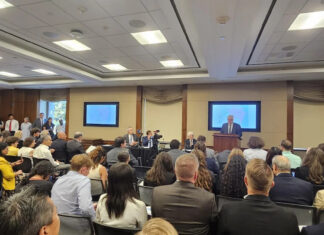By Artak Khulian
YEREVAN (Azatutyun) — The delimitation and demarcation of Armenia’s border with Azerbaijan will not necessarily be based on a 1991 declaration championed by Yerevan, according to a new agreement signed by the two countries on Friday, August 30, and publicized on Monday, September 2.
The agreement involves “regulations” for joint activities of their respective commissions dealing with the border delimitation process. It does not specify which maps, if any, will be used by the two sides. It only refers to the 1991 Alma-Ata Declaration in which Armenia, Azerbaijan and other newly independent republics recognized each other’s Soviet-era borders. The declaration does not contain detailed descriptions of those borders.
“If in the future the [separate] agreement on the establishment of peace and interstate relations between the Republic of Armenia and the Republic of Azerbaijan provides for other regulations, then this fundamental principle will be brought into conformity with the principles defined by the above- mentioned agreement,” reads the document released by the Armenian government.
The six other articles of the “regulations” are also short on specifics. One of them envisages the possibility of “optimizing” the heavily militarized frontier for humanitarian, cultural and economic reasons. According to Ruben Galichyan, a leading Armenian cartographer, this means two governments could “deviate” from Soviet maps to delineate at least some border sections.
Speaking at a weekend news conference, Prime Minister Nikol Pashinyan touted the agreed “regulations” as a “significant positive change of the situation.” He said Baku and Yerevan have yet to agree on which sections of the border will be delimited first and when. The publicized document also says nothing about that sequence.








